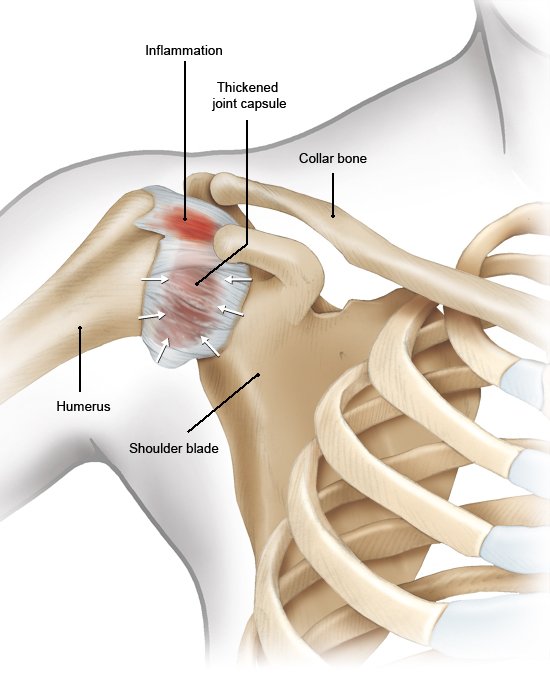Dehlinger F, Hollinger B, Ambacher T. Die Schultersteife. Orthopädie und Unfallchirurgie up2date 2015; 10(2): 115-136.
Ewald A. Adhesive capsulitis: a review. Am Fam Physician 2011; 83(4): 417-422.
Jones S, Hanchard N, Hamilton S et al. A qualitative study of patients' perceptions and priorities when living with primary frozen shoulder. BMJ Open 2013; 3(9): e003452.
Maund E, Craig D, Suekarran S et al. Management of frozen shoulder: a systematic review and cost-effectiveness analysis. Health Technol Assess 2012; 16(11): 1-264.
Mertens MG, Meert L, Struyf F et al. Exercise Therapy is Effective for Improvement in Range of Motion, Function, and Pain in Patients With Frozen Shoulder: A Systematic Review and Meta-analysis. Arch Phys Med Rehabil 2021; 103(5).
Mitchell C, Adebajo A, Hay E et al. Shoulder pain: diagnosis and management in primary care. BMJ 2005; 331(7525): 1124-1128.
Wong CK, Levine WN, Deo K et al. Natural history of frozen shoulder: fact or fiction? A systematic review. Physiotherapy 2017; 103(1): 40-47.
Zadro J, Rischin A, Johnston RV et al. Image-guided glucocorticoid injection versus injection without image guidance for shoulder pain. Cochrane Database Syst Rev 2021; (8): CD009147.
IQWiG health information is written with the aim of helping people understand the advantages and disadvantages of the main treatment options and health care services.
Because IQWiG is a German institute, some of the information provided here is specific to the German health care system. The suitability of any of the described options in an individual case can be determined by talking to a doctor. informedhealth.org can provide support for talks with doctors and other medical professionals, but cannot replace them. We do not offer individual consultations.
Our information is based on the results of good-quality studies. It is written by a team of health care professionals, scientists and editors, and reviewed by external experts. You can find a detailed description of how our health information is produced and updated in our methods.



